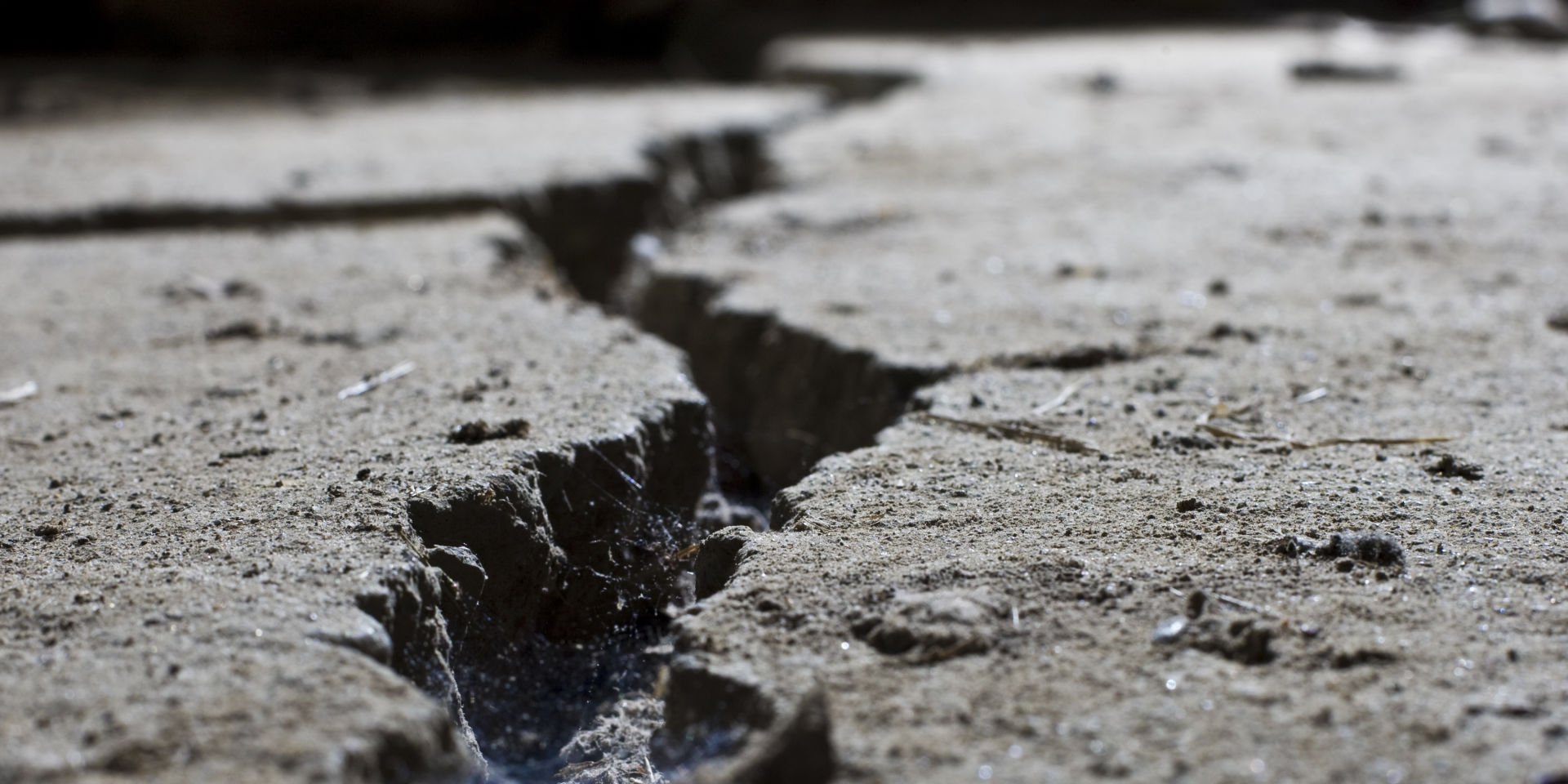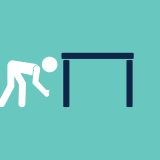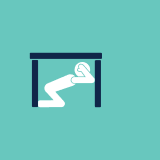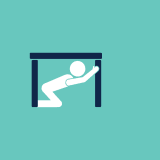
Preparing for earthquakes
While usually small in scale in Australia, earthquakes have the potential to cause significant damage.
Earthquakes are more common in Australia than most people realise. Although most are too small to feel, Australia records on average 100 or more earthquakes of magnitude 3 every year, a magnitude 5 earthquake every one to two years, and a magnitude 6 (or above) earthquake every ten years, according to Geoscience Australia.
Preparation is key to staying safe and protecting your property should you experience an earthquake.
Preparing for earthquake
While most earthquakes come with little notice, there are steps you can take to prepare.
Recognise warning signs
If you see these signs, it could indicate an earthquake is approaching.
Understand your risk
- Speak to your neighbours, insurer, the State Emergency Service (SES) or Local Government whether earthquakes have occurred in your area and what magnitude they were.
- If earthquakes are common in your area, take the below steps to prepare your home and family.
Prepare your home and family
- Check with your insurer if your insurance policy covers earthquake damage.
- Identify safe places in your home to take shelter during an earthquake – such as sturdy desks, tables or other furniture.
- If you're in a high-risk area, have a few additional items in your emergency kit – including sunscreen, disposable gloves and toiletries.
While earthquakes can often be difficult to predict, there can sometimes be subtle signs one is on the way.
Animal behaviour
If you notice your pets or wildlife are behaving erratically (such as birdcalls at night that are usually during the day), this could indicate an earthquake is about the happen.
Ground water level fluctuations
Watch for sudden water changes in wells and bores (where applicable).
Foreshocks
If the earthquake is big, there are often smaller foreshocks before the main earthquake occurs.
If you are indoors
Being inside a building can be dangerous during an earthquake. Here's what to do if you are.
If you are outdoors
If you're not inside a building or structure when an earthquake hits, there's steps you should take to ensure your safety.
General safety advice
Stay away from glass, windows, outside doors and walls, and anything that could fall, such as lighting fixtures or furniture.
Stay in bed if you are there when the earthquake strikes. Hold on and protect your head with a pillow, unless you are under a heavy light fixture, fan or airconditioning unit that could fall. In that case, move to the nearest safe place.
Do not use a doorway except if you know it is a strongly supported, load-bearing doorway and it is close to you. Many inside doorways are lightly constructed and do not offer protection.
Stay inside until the shaking stops and it is safe to go outside. Do not exit a building during the shaking. Research has shown that most injuries occur when people inside buildings attempt to move to a different location inside the building or try to leave.
DO NOT use elevators.
Be aware that the electricity may go out or the sprinkler systems or fire alarms may turn on.
Safety advice for people with disabilities:
- Deaf or hard of hearing: Prior to an earthquake, identify and test multiple ways to receive warnings and evacuation information. Check with your state emergency services on how best to receive alerts. (e.g. mobile alerts).
- Blind or have low vision: Earthquakes can cause items to fall and furniture to shift. Regular sound clues may not be available afterwards. Move with caution.
- Developmental/cognitive/intellectual disabilities: If you or somebody you love has difficulty understanding, remembering, or learning, keep a simple list of what to do and important information with you and in your kits. Practice your plan in advance. If you use augmentative communication supports, include these in your planning.
Following an earthquake
Once the earthquake is over, it doesn't mean the danger has passed. These steps can help you in the aftermath.
Tsunamis
Earthquakes near the coast can trigger tsunami events. Here is how to spot one and what to do next.
Immediate steps
- Turn off all electricity, gas, and water. Check for gas and fuel leaks. Do not light any matches until you have confirmed there are no leaks. If in doubt, don't light one.
- Check if anyone in your household (and neighbours if safe to do so) has been injured and apply first aid as required. If anyone has been seriously injured, do not move them unless they are in immediate danger.
Survey damage
- Check for broken water, sewerage or electrical mains.
- Check for cracks in ceiling, walls and floors. If there are cracks, this could mean the structural integrity of the building has been compromised and is no longer safe to be inside.
- Evacuate the building if it is badly damaged as there may be aftershocks.
Next steps
- If at home, collect non-perishable food and water where safe to do. You can collect emergency water from heaters, ice cubes or toilet tanks.
- Listen to your local radio for advice on damage and what to do.
- Avoid using the phone unless your situation is life-threatening to reduce pressure on phone lines.
- Avoid driving unless to help keep streets free for emergency services. Roads may also be hazardous and unsafe to drive on.
- Do not enter damaged buildings or return to yours until assessed and advised it is safe to do so by a qualified professional.
checkIf an earthquake occurs in or close to the ocean, it may trigger a tsunami. If this happens, and you live close to the ocean, you may receive an official Tsunami Warning from authorities. Tsunamis can also be triggered by volcanic eruptions and significant landslides.
The sudden movement of the water column in the ocean creates fast-moving, powerful waves that can cause flooding, land inundation and dangerous rips.
As Australia's east coast faces the 'Pacific Ring of Fire', it is the area of the country most at risk from a tsunami. Fortunately, due to the distance of the tectonic plate edge from the east coast, it is usually several hours before a tsunami can reach the shoreline, however in some instances like an underwater landslide, you may only have minutes to respond.
Signs of a Tsunami
- Feeling the earth shake. This indicates a strong earthquake has occurred and could trigger a tsunami.
- Seeing the ocean level retreat dramatically and over a short period of time. While this doesn't occur with every tsunami, it is a warning sign for a powerful one. If you see this occur, you may only have a minute or two to get to higher ground.
- Hearing an unusually loud roar from the ocean that sounds similar to a plane or train. This could be an indicator of a tsunami before you see it. Get to higher ground immediately, as it is an indicator the tsunami is nearly upon you.
What to do in the event of a Tsunami
- Follow advice from authorities.
- The Tsunami Warning will indicate the areas expected to be affected and level of risk. Check if you and your property will be affected.
- If you are close to the water or in a low-lying area, move to higher ground if advised by authorities, or you notice the warning signs above. Stay there until advised by authorities that it is safe to return.
- If you are at home or work and asked to evacuate, follow the recommended evacuation route. If there is no time to get to higher ground, shelter on the highest level of a brick or concrete building and stay there until advised it is safe to leave.
- Do not go swimming, boating, fishing, surfing or any other water sports, or camp near the ocean, estuaries or rivers in the impact area.
- If you are on a boat or ship in a harbour, estuary or shallow water, return to land and secure your vessel if there is time, and move to higher ground. If you don't have enough time to get safely ashore, move out to deeper water and stay there until advised it is safe to return.
First steps in any disaster
If your situation is life-threatening, call 000 immediately.
If you've been impacted by disaster, contact your local State Emergency Service (SES) on 132 500 for assistance and advice on what to do next.
For insurance claims, please visit our Make a Claims page.
The information provided is intended to be of a general nature only. We do not accept any legal responsibility for any loss incurred as a result.





